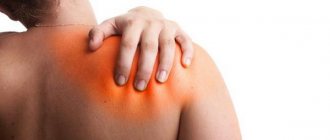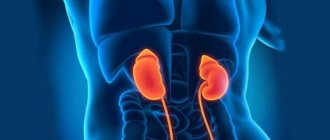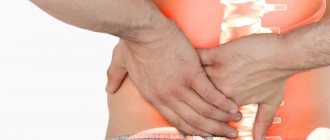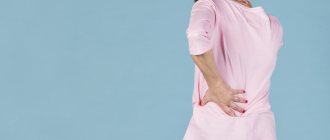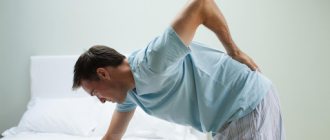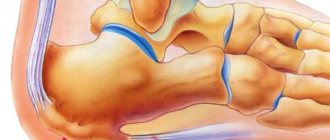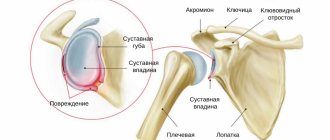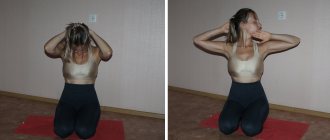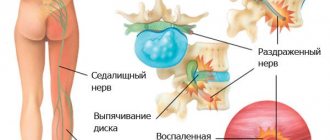Winged scapula syndrome is a rare condition that causes significant discomfort and limits the activity of the entire upper limb. There are many reasons why it develops. Among them are rare hereditary pathologies, such as Pompe disease1.
In Pompe disease, a mutation causes a deficiency of the enzyme acid glucosidase. When it is insufficient, glycogen accumulates with subsequent cell destruction. The muscles become weak, their atrophy gradually occurs and posture is disturbed. As it progresses, pterygoid scapula syndrome develops, muscle weakness increases, and breathing problems appear1.
Along with Pompe disease, the clinical picture of the pterygoid scapula can occur in other, more common pathologies. What other diseases can cause disturbances, how are they characterized and when should you see a doctor?
Causes of pterygoid scapula
Pterygoid scapula occurs due to weakness of the adductor muscles that bring the shoulder blades together - the trapezius and rhomboid. With one edge they are attached to the spinous processes of the vertebrae, and with the other - to different parts of the bone. The trapezius muscle goes to the top, and the rhomboid muscle goes to the bottom. Under their influence, it approaches the spine and performs movement (rotation) around the sagittal axis.
If the serratus anterior muscle is weakened, then the corners stick out, because muscle fibers are attached to the dorsal and medial part of the bone. The serratus muscle brings the inferior angle to the spine. If this muscle group loses tone or its structure is disrupted, then the scapula takes an abnormal position.
The cause of muscle dysfunction is dysfunction:
- innervation - the dorsal nerve is located close to the surface of the body and its damage leads to pathology;
- blood supply - a violation of transport in the cervical arteries, which ensures the trophic process of tissues, causes the syndrome.
Pterygoid scapula can occur in both childhood and adulthood. Pathology is divided into:
- congenital;
- acquired.
Typically, a birth defect can be noticed immediately after the baby is born. Congenital pterygoid scapula syndrome results from:
- genetic abnormality of connective, nervous or muscle tissue;
- disturbances of intrauterine anlage and development of tissues and organs.
A child can acquire the syndrome as a result of:
- birth trauma;
- poor posture caused by ergonomic furniture (high chair and low table), improper distribution of load (wearing a heavy backpack or bag on one shoulder), improper lighting of the workplace;
- weakness of the muscle corset due to physical inactivity, muscle pathology (atony, dystrophy, hypotrophy);
- spinal or head injuries.
The photo shows how the shoulder blades stick out in a child with scoliosis.
The cause of pterygoid scapula in adults most often lies in:
- injuries, ruptures, muscle strains, dislocation of the shoulder joint;
- disease or damage to the spine;
- complication of a systemic disease - autoimmune and allergic origin (15% of cases), infectious (15-25% of cases), inflammatory (myositis, neuritis);
- a tumor compressing a nerve or blood vessel;
- surgical intervention - surgery on the spine, chest, rib, mammary gland (30% of cases).
The photo shows a winged scapula, the cause of which is spinal surgery.
The process of development of the musculoskeletal system ends by the age of 20-22. Therefore, the child is more susceptible to pathology due to the immaturity of the system. An adult suffers from excessive physical exertion caused by working conditions or intense sports.
In women, the disease occurs 3-6 times more often than in men. The reason is in the physiological characteristics of the structure of the muscular and skeletal system. For example, today a backpack is popular not only among schoolchildren. It has become an integral part of the image of young people of both sexes. Uncomfortable shoes, high heels, a handbag over the shoulder, wearing compressive clothing and underwear lead to complications of childhood spinal pathology.
As a result of prolonged exposure to damaging factors, scoliosis develops, the scapula protrudes, and the function of internal organs is impaired. The anomaly can accompany orthopedic diseases - kyphoscoliosis, rupture of the acromial clavicular joint, rupture of the serratus anterior muscle. Deformity is a typical manifestation of muscular dystrophy. The same syndrome is observed in amyotrophic lateral sclerosis and poliomyelitis (in children).
Physiological features of the disease
Winged scapula syndrome most often occurs in young men (the ratio to women is 2:1, and according to some reports 11:1). The reason is that active adult males are prone to injury. The shoulder girdle suffers during heavy lifting, strength training and contact sports. The clinical picture of the disease is manifested by a number of symptoms:
- pain, sharp, burning, bursting, aggravated by movement;
- radiating pain to the arm, collarbone or frontal chest, under the rib;
- decreased range of active movements in the shoulder girdle;
- decrease in shoulder muscle mass;
- weakness in the limb.
Acute pain rarely lasts more than 2 weeks. Most often, it subsides after 2-3 hours and becomes dull, aching, which is caused by the reaction of the nerve endings of the muscle. In children, the pathology occurs without acute pain.
At the initial stage of the pathology, one shoulder blade protrudes more than the other, but gradually the pathological process also affects the second one (noted in 5% of cases). With scoliosis, as a rule, there is a bilateral process.
Cases of the disease occur in any age group. It can affect both newborns and adults up to 85 years of age.
Newborn period
At the time of birth, the child’s back experiences an enormous load, and therefore can lead to disturbances in the development of the spinal column, which in newborns appear immediately after birth or several months later.
At birth, the child's spine is a straight line without the bends characteristic of an adult. Until the fifth month of life, a baby develops cervical lordosis as a natural forward bend. By seven months, thoracic kyphosis develops - a backward bending of the spine.
At eight to nine months, lumbar lordosis is formed, and only after a year the child’s spine acquires the correct contours. If at 8 months the vertebrae on the back protrude, this is a disorder that should be addressed by a specialist. Causes of pathology:
- Injuries received during childbirth.
- They try to place the baby before he reaches six months of age.
- An infant falls from a height causing injury.
- Rickets due to lack of vitamin D.
- Constant use of kangaroos and walkers.
- Improper sleep (on a soft bed, with a high pillow).
- Hereditary predisposition.
If a baby has protruding bones on his back, be it the shoulder blades or a vertebra, parents have a reason to consult a specialist.
There should be no bends or bulges on the newborn’s spine - the spinal column will take the desired shape after a year, and then the strengthening of the muscles, connective tissues and bone skeleton will follow.
Diagnostic methods
The physical examination method helps to make the correct diagnosis. You can do the test yourself, at home. To do this, you need to stand facing the wall, at arm's length, and rest your hands on the wall. If there is an anomaly, the shoulder blades take on a wing-like appearance.
For differential diagnosis, the instrumental method is used:
- radiography to visualize the location of the bone;
- MRI and CT, to assess the condition of the nerve and muscle lesions, identify tumors;
- electromyography, to identify pathology of muscle groups - serratus and rhomboid;
- electroneurography, to detect disturbances in signal transmission through nerve tissue;
- angiography to assess the function and condition of the vascular bed.
To exclude a diagnosis with similar symptoms and clarify the cause of the lesion, laboratory tests are prescribed:
- clinical blood test;
- detection of antinuclear bodies in blood serum;
- biochemical analysis (if an infectious cause is suspected).
The x-ray shows how the shoulder blades stick out. Photo of a child with pathology.
A physiological test is also performed. The patient himself or with the help of an assistant should raise his arm to shoulder level. When raising the arm, the scapula protrudes, the bone has a wing-like appearance, and movements in the joint are difficult or impossible.
Exercises for pain under the right shoulder blade. Pain under the right shoulder blade from the back
Pain syndrome in the scapula area from the back of the back can manifest itself in different ways, have a different nature and degree of severity. As a rule, during the initial examination, the doctor asks the patient how it hurts, after which it happens, how long the pain lasts. All this helps to form a clinical picture.
Constant aching pain can occur if a person has taken an uncomfortable position or spends a long period of time with his head tilted down. This symptom is typical for those who lead a sedentary lifestyle. This mainly applies to office workers who spend a lot of time at the computer.
Severe, acute pain on the right side in the area where the shoulder blade is located will manifest itself when coughing, sneezing, or intensively inhaling air. Sharp, lightning-fast pain can occur if a person makes a sudden movement or engages in heavy physical labor.
Nagging pain may be present constantly; it intensifies if the patient changes position or accelerates in movement. The pain, which is dull in nature, worsens when changing the position of the body and head, during coughing and sneezing, can radiate to the arm on the corresponding side.
Important: colic under the right shoulder blade has no relationship with existing pathologies and is considered a disorder in the field of neurology. They appear spontaneously and also disappear unexpectedly without the use of therapy.
The pulsating sensations can increase, causing severe, unbearable pain to the patient. They go away if you take a lying position.
What to do and how to treat?
Conservative treatment is usually symptomatic. Drugs that relieve pain are prescribed:
- analgesics;
- NSAIDs;
- glucocorticoids (in case of an autoimmune cause of the lesion).
Comprehensive treatment helps to get rid of imbalances:
- physiotherapy;
- physiotherapy.
If your shoulder blades are protruding, a vertebrologist will tell you how to correct your back. Gentle manual techniques have virtually no contraindications and will help to effectively correct the deformity, stop the progression of the disease and get rid of symptoms.
Special gymnastics helps strengthen the pectoral, dorsal and subscapularis muscles, and restore range of motion in the joint. If your shoulder blade protrudes, exercises must be done regularly. The doctor will individually select a set of exercises, intensity and duration of exercise.
In case of severe pathology, the use of orthopedic products – a corset, a fixator – is justified. Wearing it will help stop the development of muscle dysfunction and prevent joint instability. Treatment is a long process, especially in adults. To eliminate the disease, therapy must be started as early as possible, while the development of the skeletal system continues.
Long-term treatment is not a guarantee of recovery. In particularly advanced cases, surgical intervention may be required:
- neurolysis of the long thoracic nerve (dissection);
- innervation of the serratus anterior muscle (suturing);
- fixation of the scapula by tendon transfer;
- scapulothoracic arthrodesis.
However, most operations lead to disability due to limited movement in the joint. The doctor prescribes surgery after a certain period of time, because... With proper treatment, functional recovery is possible in 1-2 years.
Despite the apparent simplicity of therapy, it is not recommended to treat the disease on your own. Self-medication can cause complications and significantly worsen the condition.
Diagnosis
SCL is a symptom of various neurological diseases and can also be a slight abnormality.
The disorder can be detected by the following signs:
- paralysis of the anterior muscles, for example, after damage to the pectoral nerve. A characteristic feature is the enlargement of the scapula when the shoulder is raised;
- paresis of the trapezius muscle after damage to the accessory nerve;
- neuropathy of the dorsal scapular nerve.
The first sign is often a severe protrusion of the scapula, which can be seen in the mirror. You should find out what causes the malposition of one or both shoulder blades. The muscles around the shoulder blade can be tested using functional tests. The test is done by measuring nerve conduction velocity. Very low values may be a sign of nerve damage or even paralysis.
The muscles themselves can also be tested. Electromyography also measures electrical muscle activity. If nerve damage is suspected, the doctor can also assess the extent of the pathology.
We advise you to study: Back pain in the kidney area
Treatment
Treatment of SCL begins with the appointment of conservative (non-operative) measures. In addition to physical therapy, muscle strengthening exercises and electrotherapy are prescribed. Targeted exercises are aimed at counteracting the progression of symptoms. In cases of nerve damage or serious injury, electrotherapy can have a relaxing effect, especially on muscle fibers. If pain occurs, medications may be used to relieve discomfort and severe inflammation. In very severe cases, surgery may be performed.
Sometimes analgesic drugs are prescribed, which help to significantly alleviate the condition of children. Painkillers are prescribed only when moderate or very severe pain occurs. In other cases, the risk does not outweigh the benefit, so physical therapy (PT) or other physiotherapeutic measures are used
It is important to consult your doctor before using medications because some medications can cause potentially life-threatening side effects.
Exercise therapy
Regularly performing a variety of exercises with specific guidance can help reduce the symptoms of the disorder. Patients can learn exercises from physical therapists or rehabilitation clinics. The goal of the training is to strengthen the muscles of the shoulder girdle, keeping the shoulder blade in the correct position. The process requires continuous learning. Many exercises are performed using special equipment.
The patient performs both stretching exercises and muscle strength development exercises. In addition, the exercises are performed on devices in which the arm moves from top to bottom, thus training the muscles of the shoulder and neck. A trained physiotherapist or doctor can help you choose the most appropriate exercises. Careful and correct execution of exercises significantly affects the prognosis of the disease.
Physiotherapy
The child can have a massage, but if symptoms are severe, you need to visit a doctor. Improper treatment can lead to serious and dangerous consequences for the child’s health. It is also not recommended to purchase medications for treatment without consulting a doctor. At the first signs, you should contact a specialist. Timely treatment will help prevent complications and improve the child’s quality of life. The earlier treatment is started, the higher the success of a child’s full or partial recovery. It is highly recommended not to delay your visit to the doctor.
Pterygoid scapulae in a child: treatment features
In children, the deformity is most often caused by scoliosis. The disease is asymptomatic, so drug treatment is ineffective and dangerous. Children respond well to manual therapy, especially when signs are identified early in the development of the disease. You can notice protruding shoulder blades in children yourself and contact a specialist.
The child's shoulder blades are sticking out. Photos of physical therapy classes.
If a child’s shoulder blades are sticking out, then gymnastics, swimming, and sports that strengthen the muscle corset are necessary. It is necessary to exclude pathogenic factors and enroll the child in sports sections. But if one shoulder blade protrudes in a child, then this may be a sign of serious diseases that require consultation with a specialist, making the correct diagnosis in order to prescribe and begin treatment.
Test for correct posture
Correct posture can be checked as follows:
- you need to measure with a centimeter the distance from the seventh (most protruding) cervical vertebra to the lower corner of the left and then the right shoulder blade. During the measurement, you should stand in a relaxed position. With normal posture, these distances are equal.
- Posture can be checked using the so-called shoulder index. Measure the width of your shoulders from the chest, then from the back (shoulder arch). Find the shoulder index using the formula: shoulder arc 100%. If the shoulder index is 90-100%, the posture is correct.
You should correct your posture at least 3 times a day.
Possible complications after surgery and prognosis
An operation when the shoulder blades protrude is a necessary measure and is resorted to as a last resort. Surgery is traumatic and requires a long recovery period. In 90% of cases, the results of surgical treatment are satisfactory. However, most operations lead to disability due to limited movement in the joint. According to some data, the number of postoperative complications is 60%. Of these, 5-20% are wound infections. Ankylosis of the joint is observed in 9-10% of cases. The rest consists of:
- hematomas;
- seromas;
- tissue necrosis;
- loss of sensitivity, etc.
Conservative therapy for pterygoid scapula has a good prognosis. With adequate treatment and early diagnosis, it can be cured completely.
Slot machines
Joycasino offers customers a wide selection of slot machines from Elk, Betsoft, Microgaming, Playson, Quickspin and other leading developers. Most of the catalog is occupied by slots, where winnings are paid in accordance with the coefficients of the symbols. Among them are Sakura Fortune, Pink Elephant, Resident and many others.
In addition to slots, the Joycasino collection includes the following types of games:
- jackpots are a special category of slots where, in addition to the standard winnings per spin, you can get a big jackpot when rare symbols appear;
- video poker - a mix of classic poker with a slot machine;
- tables - roulette, baccarat, blackjack in the format of traditional slot machines;
- Live dealers - the category includes table games in the live dealer format, where participants watch the actions of the presenter.
Is the muscle corset strong?
You can get the answer to this question without leaving the chair on which you are sitting. Sit up straight, extend your arms forward and hold them for 30 seconds. If at the same time you cannot keep your back straight, since your arms are pulling you along with them, then you will have to seriously work on your muscles - this indicates their pronounced weakness.
Normal posture of a schoolchild. The shoulders are positioned horizontally, the shoulder blades are pressed to the back (not protruding). The physiological curves of the spine are moderately expressed. The protrusion of the abdomen decreases, but the anterior surface of the abdominal wall is located anterior to the chest. The right and left halves of the body are symmetrical when viewed from the front and back.
Types of scoliosis ↑
Curvatures in the spine can develop as follows:
- c-shaped scoliosis. This is the simplest type of scoliosis. It is characterized by one arc of curvature. This type is the most common. It's easy to spot. The patient only has to bend over, and an arc of curvature like the letter C will be visible on the back.
- S-shaped scoliosis. This form is characterized by the presence of two curvatures. As a result, the spine becomes S-shaped. Only one arch will be scoliotic, the main one. The second arc will become compensatory. Appears in the overlying vertebral region to align the position of the entire body in space. If the entire lumbar spine develops to the right side, then a curvature appears directly in the thoracic segment, but to the left side.
- Z-shaped scoliosis. When the spine develops three curves at once, this symptom can safely be called Z-shaped scoliosis. Usually, the third arc is expressed much weaker than the other two. This form of pathology is the most severe and rare. Only radiography will help identify it.
In addition to the general form of deformation, the spinal column can be bent to the left or to the right. Therefore, there can be either left-sided or right-sided scoliosis. For example, S-shaped scoliosis causes deformation of the arches on different sides. If Z-shaped scoliosis develops, then the lower and upper arches will be directed only in one direction, and the one that is between them will be directed in the opposite direction.
The reasons for this defect have not yet been fully elucidated. However, there are two main groups – congenital and acquired. Disorders of intrauterine development first lead to an underdeveloped congenital state of the vertebrae, the formation of several additional vertebrae with other pathologies.
There are several reasons for the acquired symptom:
- injuries, fractures in the spine;
- dislocations, subluxations in the vertebrae of the neck;
- incorrect placement of the entire body as a result of deviations in human physiology, for example, flat feet, myopia, difference in leg length, strabismus;
- incorrect body position as a result of staying in one position for a long time;
- unbalanced diet;
- Excessive amount of physical activity, rare physical exercise;
- problems that are associated with different levels of muscle development, for example, rickets, unilateral paralysis, radiculitis, rheumatism, tuberculosis, pleurisy, polio, and other diseases.
Essence of the disease
Sprengel's disease begins to develop in the early stages of pregnancy in utero. During normal skeletal formation, the shoulder blades develop along with the bones of the shoulder girdle. At the beginning of development, the shoulder blades are formed quite high, but later they fall into place. If there are any developmental disorders, they remain in a high position and protrude strongly from the back.
We advise you to study - Lumbodynia: code according to ICD 10
This pathology often develops together with other abnormalities in the formation of the skeleton:
- 1. A person develops additional hemivertebrae.
- 2. Krippel-Feil syndrome develops.
- 3. Some of the ribs are fused together.
- 4. Clubfoot occurs.
Clubfoot can develop as a separate disease not associated with Sprengel's disease.
Clinical manifestations
Incorrect position of the shoulder blades leads to disruption of the functioning of the back, shoulder and pectoral muscles, affecting the distribution of the load on the spine. For a long time, the disease proceeds latently until, under the influence of provoking factors, pronounced symptoms appear. A characteristic symptom of the pathology is the sudden onset of acute pain in the shoulders on one or both sides. Pain appears for no apparent reason, is localized in one point or radiates to the chest, under the shoulder blade, or to the limbs. Very often it is accompanied by impaired sensitivity in the skin and fingers.
The disease manifests itself as sudden sharp pain in the shoulder
The pain syndrome usually lasts from 3 days to a week, and taking analgesics gives only a short-term effect. After this time, the pain gradually subsides on its own, but the process of development of pathology is activated, and movement disorders begin to appear. They are always combined with paresis of the serratus muscle located in the upper part of the chest wall, as well as mosaic lesions of the infraspinatus, subscapularis, deltoid and other back muscles. The severity of these manifestations gradually increases and reaches a maximum after a few weeks. After this, the reverse process begins, and motor activity begins to recover, albeit very slowly.
The acute phase of the disease is characterized by movement disorders caused by damage to the back muscles.
As for external signs, they manifest themselves only in a change in the position of the shoulder blades: the shoulder blade bones move slightly to the sides of the spine, their lower corners rise and protrude back. The more advanced the condition, the more the shoulder blades stick out, and this is clearly visible to the naked eye.
Adult patients
With age, the human body undergoes changes. In healthy people who play sports and lead an active and active lifestyle, back problems occur less frequently, mainly due to injuries. Why does the spine stick out on the back of adults or their shoulder blades stick out:
- Thoracic and sacral kyphosis progresses, and symptoms of a “round” back are observed. The back becomes too convex, and when tilted, one or more vertebrae may protrude.
- . As a result of insufficient nutrition of the tissues of the intervertebral discs, the nucleus pulposus protrudes beyond the disc, which displaces the vertebrae.
- With scoliosis, a lateral curvature of the spinal column occurs. As a result, one shoulder blade sticks out more than the other - asymmetry of the bone structures of the back. Additionally, the lower right or lower left rib protrudes.
- Pathological lordosis is excessive curvature in the lumbar or cervical region. The bending of the spinal column takes on irregular contours, the vertebrae shift anteriorly and put a strain on the internal organs of the abdominal cavity.
- Injuries. The spinal column acts as a shock absorber for the human body. Any mechanical damage (impacts, falls) can lead to irreversible processes and cause protrusion of the vertebrae.
Protruding shoulder blades, bones, and vertebrae on the back cannot be called a normal phenomenon. The spine should have the correct curves, symmetrically located shoulder blades, an even line from the pelvis to the neck when bending forward. What to do if there are problems? Go to the doctor and do not self-medicate.
What types of posture disorders are there, why curvature of the spine occurs and how to check the correct posture of a child - this is discussed in our article.
Every mother begins to worry if she suddenly notices that her... Worry may also be caused by the fact that one of the baby’s shoulders has become lower than the other, and the child’s shoulder blades are too sharp.
The worries are quite appropriate, because all these symptoms may indicate a violation of the child’s posture.
When it comes to back problems, it is very important to constantly prevent postural disorders in children, as well as to notice the problem in time, consult a doctor and begin treatment. If left untreated, the curvature of the child’s spine can lead to disruption of the cardiovascular system, breathing, and cause oxygen starvation in the body.
If left untreated, the curvature of the child’s spine can lead to disruption of the cardiovascular system, breathing, and cause oxygen starvation in the body.
Today we will talk about what types of postural disorders there are, why curvature of the spine occurs, how to check the correct posture of a child, what is the prevention of curvatures, and how to treat postural disorders.
We advise you to study - Metastases in the spine: symptoms, treatment and prevention
Other diseases - clinics in
Choose among the best clinics and make an appointment Family
Moscow, Orekhovy pr., 11, entrance from the yard (from the children's playground)
Shipilovskaya
7
- Consultation from 1850
- Reflexology from 2000
- Neurology from 500
Most children and adults with scoliosis do not require treatment at all for mild forms of curvature. At this stage, scoliosis can be controlled. Non-surgical treatment includes anti-inflammatory drugs, wearing an orthopedic corset and physical therapy.
Surgery is used in the following conditions:
- the curvature has reached an angle greater than 50 degrees and is accompanied by constant pain;
- right-sided scoliosis progresses to the lower back;
- decreased cardiac and pulmonary function.
During surgery, the patient has one or more intervertebral discs removed. Afterwards, another procedure follows – osteotomy (bone removal). Then the doctor uses spinal devices: rods and screws to try to stabilize the spine.
A special graft stimulates new bone growth. In order for the artificial structure to take root in a person, the surgeon may recommend a drug that accelerates bone growth. Further treatment and rehabilitation is accompanied by physiotherapy and outpatient examination. (See also: symptoms of scoliosis of the thoracic spine).
Oksana Tkalenko • 01/11/2015
In childhood, spinal scoliosis is easiest to treat, and the younger the child, the higher the chances of completely getting rid of it. This is due to the fact that the spine, which is at an early stage of formation, lends itself well to correction. Treatment of scoliosis in children in adolescence is much more difficult and takes longer. And after eighteen, only surgery can completely correct the curvature.
First aid
It is important to provide first aid to the patient as early as possible in order to prevent possible complications and consequences. In case of a scapula injury, the following steps must be taken:
- Call an ambulance.
- Carefully move the arm on the injured side to the side and fix it as accurately as possible.
- To immobilize your hand, you can use a regular scarf, shirt or T-shirt.
- Apply a cold compress to the damaged area.
- Give the person a painkiller (Analgin, Ibufen).
A person with a bruise or fracture of the scapula should be transported independently in a sitting position, but it is better to wait for a specialist to arrive.
